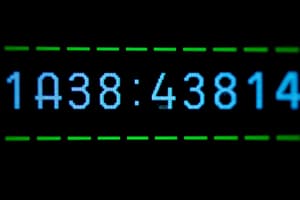Podcast
Questions and Answers
What happens when a client requests an IP address from a DHCP server?
What happens when a client requests an IP address from a DHCP server?
- The client assigns its own IP address
- The DHCP server generates a new IP address
- The DHCP server retrieves it from its storage and delivers it to the client (correct)
- The DHCP server assigns a permanent IP address to the client
Which type of allocation is best suited for giving IP addresses to servers?
Which type of allocation is best suited for giving IP addresses to servers?
- Static allocation
- Manual allocation (correct)
- Automatic allocation
- Dynamic allocation
What is the main advantage of Dynamic allocation?
What is the main advantage of Dynamic allocation?
- It allows for efficient management of a pool of network addresses (correct)
- It assigns permanent IP addresses to clients
- It is the simplest method of allocating IP addresses
- It ensures that servers have permanent IP addresses
What happens when a client's lease expires?
What happens when a client's lease expires?
What is the purpose of a lease in Dynamic allocation?
What is the purpose of a lease in Dynamic allocation?
What is the purpose of the DHCPREQUEST message sent by the client?
What is the purpose of the DHCPREQUEST message sent by the client?
What happens if the client does not receive an answer from the DHCP server until time2 has passed?
What happens if the client does not receive an answer from the DHCP server until time2 has passed?
What can a client do when its lease is about to expire?
What can a client do when its lease is about to expire?
What is the default value of time1?
What is the default value of time1?
What is an advantage of using Dynamic allocation in a network with limited addresses?
What is an advantage of using Dynamic allocation in a network with limited addresses?
What is the main difference between Dynamic and Manual allocation?
What is the main difference between Dynamic and Manual allocation?
What happens if the client gets a new address but not its previous address?
What happens if the client gets a new address but not its previous address?
What is the purpose of the DHCP server?
What is the purpose of the DHCP server?
What does a client do with its IP address when it no longer needs it?
What does a client do with its IP address when it no longer needs it?
What is the shortest waiting time before sending DHCPREQUEST again?
What is the shortest waiting time before sending DHCPREQUEST again?
What is the primary task of a DHCP server?
What is the primary task of a DHCP server?
What is the format of the DHCP storage model?
What is the format of the DHCP storage model?
What happens if the client gets its previous address?
What happens if the client gets its previous address?
How does a client request its configuration parameters from a DHCP server?
How does a client request its configuration parameters from a DHCP server?
What is the default value of time2?
What is the default value of time2?
What is the purpose of the options field in a DHCP response message?
What is the purpose of the options field in a DHCP response message?
What happens if the client does not get an address at all?
What happens if the client does not get an address at all?
What is the advantage of using default values defined in the Host Requirements RFCs?
What is the advantage of using default values defined in the Host Requirements RFCs?
What is the purpose of the parameter request list option?
What is the purpose of the parameter request list option?
What is the basis of the DHCP message format?
What is the basis of the DHCP message format?
Why is the DHCP message format based on BOOTP messages?
Why is the DHCP message format based on BOOTP messages?
What is the purpose of the DHCP protocol?
What is the purpose of the DHCP protocol?
What is the purpose of the 'xid' field in a DHCP message?
What is the purpose of the 'xid' field in a DHCP message?
What is the length of the 'hlen' field in a DHCP message?
What is the length of the 'hlen' field in a DHCP message?
What is the purpose of the 'ciaddr' field in a DHCP message?
What is the purpose of the 'ciaddr' field in a DHCP message?
What is the length of the 'chaddr' field in a DHCP message?
What is the length of the 'chaddr' field in a DHCP message?
What is the purpose of the 'hops' field in a DHCP message?
What is the purpose of the 'hops' field in a DHCP message?
What is the purpose of the 'flags' field in a DHCP message?
What is the purpose of the 'flags' field in a DHCP message?
What is the purpose of the 'yiaddr' field in a DHCP message?
What is the purpose of the 'yiaddr' field in a DHCP message?
What is the length of the 'sname' field in a DHCP message?
What is the length of the 'sname' field in a DHCP message?
What is the purpose of the 'siaddr' field in a DHCP message?
What is the purpose of the 'siaddr' field in a DHCP message?
What is the first message sent by the DHCP client in the client-server negotiation process?
What is the first message sent by the DHCP client in the client-server negotiation process?
What is the purpose of the DHCPREQUEST message?
What is the purpose of the DHCPREQUEST message?
What happens when the client receives a DHCPNAK message?
What happens when the client receives a DHCPNAK message?
What is the role of the DHCPOFFER message?
What is the role of the DHCPOFFER message?
How many servers can be selected by the client in the DHCP negotiation process?
How many servers can be selected by the client in the DHCP negotiation process?
What is the purpose of the DHCPRELEASE message?
What is the purpose of the DHCPRELEASE message?
What is the final message sent by the server in the DHCP negotiation process?
What is the final message sent by the server in the DHCP negotiation process?
What happens when the server receives a DHCPRELEASE message?
What happens when the server receives a DHCPRELEASE message?
What is the purpose of the DHCPACK message?
What is the purpose of the DHCPACK message?
What happens when a DHCP client sends a request to a non-authoritative server?
What happens when a DHCP client sends a request to a non-authoritative server?
What is the purpose of the DHCPOFFER message?
What is the purpose of the DHCPOFFER message?
What happens when the client receives a DHCPOFFER message?
What happens when the client receives a DHCPOFFER message?
What information is included in the DHCPOFFER message?
What information is included in the DHCPOFFER message?
What is the purpose of the DHCPREQUEST message?
What is the purpose of the DHCPREQUEST message?
What is the final phase of the configuration process?
What is the final phase of the configuration process?
What happens when a client's IP lease is still valid on a different subnet?
What happens when a client's IP lease is still valid on a different subnet?
Which type of server may grant a client's request for its last-known IP address?
Which type of server may grant a client's request for its last-known IP address?
What is the purpose of a client's broadcast in the DHCP discovery phase?
What is the purpose of a client's broadcast in the DHCP discovery phase?
What may a client start after obtaining an IP address to prevent IP conflicts?
What may a client start after obtaining an IP address to prevent IP conflicts?
Which UDP port is used by the DHCP client side?
Which UDP port is used by the DHCP client side?
What is the destination of a client's UDP packet in the DHCP discovery phase?
What is the destination of a client's UDP packet in the DHCP discovery phase?
What is the primary purpose of a DHCPINFORM request message?
What is the primary purpose of a DHCPINFORM request message?
What happens when a client reuses a previously allocated network address?
What happens when a client reuses a previously allocated network address?
What is the purpose of a DHCPOFFER message?
What is the purpose of a DHCPOFFER message?
What message is sent by the client to locate available DHCP servers?
What message is sent by the client to locate available DHCP servers?
What is the purpose of the DHCPREQUEST message?
What is the purpose of the DHCPREQUEST message?
What is the response sent by the server when a client reuses a previously allocated network address?
What is the response sent by the server when a client reuses a previously allocated network address?
What is the purpose of the DHCPDISCOVER message?
What is the purpose of the DHCPDISCOVER message?
What is the response sent by the server when a client sends a DHCPINFORM request message?
What is the response sent by the server when a client sends a DHCPINFORM request message?
Flashcards are hidden until you start studying
Study Notes
DHCP Allocation Methods
- There are three methods of DHCP allocation: Manual, Automatic, and Dynamic allocation.
- Manual allocation is best suited for giving IP addresses to servers, as it guarantees a permanent and known location in the network.
- Dynamic allocation is the most interesting method, as it involves assigning, reclaiming, and reusing network addresses.
- It's useful in cases where there is a limited amount of network addresses, and computers temporarily connect and disconnect to the network.
Dynamic Allocation
- The client requests a network address for a limited period of time (lease).
- The DHCP server allocates an address, marks it as 'used', and notifies the client about the address and lease time.
- The client can extend its lease, ask for a permanent assignment, or release the address back to the server before the lease expires.
Renewing and Acquiring Addresses
- The client holds two times in its memory: time1 and time2.
- Time1 is when the client starts to ask its server for renewing the lease, and time2 is when the client starts to ask other servers for an address.
- If the client doesn't get an answer, it waits half of the time left before sending DHCPREQUEST again.
- The shortest waiting time is one minute.
Configuration Parameters Delivery
- The DHCP server supplies clients with configuration parameters defined in the Host Requirements RFCs.
- The server provides a permanent storage of network parameters for clients.
- The storage model is a set of key-value pairs for each client, where the key is a unique identifier and the value contains the configuration parameters.
Message Format
- The DHCP message format is based on the BOOTP message format.
- The message format includes fields such as op, htype, hlen, hops, xid, secs, flags, ciaddr, yiaddr, siaddr, giaddr, chaddr, sname, and file.
Client/Server Model
- The client and server negotiate in a series of messages to get the parameters the client needs.
- The client broadcasts a DHCPDISCOVER message, and each server responds with a DHCPOFFER message.
- The client chooses one server and broadcasts a DHCPREQUEST message, and the selected server responds with a DHCPACK message.
Steps of Communication
- The client broadcasts a DHCPDISCOVER message.
- Each server responds with a DHCPOFFER message.
- The client chooses one server and broadcasts a DHCPREQUEST message.
- The selected server responds with a DHCPACK message.
- The client receives the DHCPACK message and is configured.
- If the client receives a DHCPNAK message, it restarts the configuration process.
- The client may choose to relinquish its lease on a network address by sending a DHCPRELEASE message.
- The server receives the DHCPRELEASE message and marks the lease as free.
DHCP Fundamentals
- DHCP (Dynamic Host Configuration Protocol) is a network management protocol used to dynamically assign IP addresses to devices on a network.
- DHCP automates and centrally manages IP configurations, replacing manual assignments by network administrators.
DHCP Operations
- DHCP operations fall into four basic phases: IP lease request, IP lease offer, IP lease selection, and IP lease acknowledgement.
IP Lease Request
- A client broadcasts a request for an IP address to available DHCP servers on the local physical subnet.
- The client can request its last-known IP address, and the server may grant the request if it is still valid.
IP Lease Offer
- The DHCP server responds with a DHCPOFFER message containing the client's MAC address, IP address, subnet mask, lease duration, and server's IP address.
- The server determines the configuration based on the client's hardware address (CHADDR field).
IP Lease Selection and Acknowledgement
- The client accepts an offer by broadcasting a DHCPREQUEST message, and other DHCP servers withdraw their offers.
- The DHCP server responds with a DHCPACK packet, including the lease duration and any other requested configuration information.
- The TCP/IP configuration process is complete after the client receives the DHCPACK packet.
DHCP Message Types
- DHCPDISCOVER: client broadcast to locate available servers
- DHCPOFFER: server response to DHCPDISCOVER with configuration offer
- DHCPREQUEST: client message to servers for requesting offered parameters or confirming correctness of previously allocated address
- DHCPACK: server response to DHCPREQUEST, including lease duration and configuration information
Additional DHCP Features
- A client can reuse a previously allocated network address by including it in the 'requested IP address' option in the DHCPREQUEST message.
- A client can obtain local configuration parameters without allocating a new address using a DHCPINFORM request message.
Studying That Suits You
Use AI to generate personalized quizzes and flashcards to suit your learning preferences.




